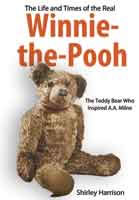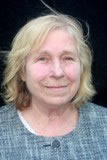New Book Charts Winnie-the-Pooh Origins In Acton
Original toy bear that inspired A.A. Milne created right here in W3
A new book reveals the true roots of the stuffed bear that inspired A.A. Milne to write 'Winnie The Pooh'. And those roots, as Shirley Harrison writes, are right here in Acton, W3.
In 'The Life And Times of the Real Winnie-The-Pooh', Harrison visits the Farnell Toy factory in Acton, now Twford CofE High School, where Pooh was made in 1921 and the store where he was bought 90 years ago as a present for baby Christopher Robin. Harrison's tale introduces the reader to some of the people who knew him in the magical world of Hartfield in Sussex. Her journey then follows Pooh over the Atlantic after World War II, where he became a touring celebrity, eventually inspiring the Disney Corporation to make him an international film star. He never returned.
 The book will be published this summer by Pen and Sword Books. Harrison, along with the Ealing Civic Society, is also keen for a plaque to be erected at Twyford High School, to commemorate the Farnell Toy Factory as the Birthplace of Pooh.
The book will be published this summer by Pen and Sword Books. Harrison, along with the Ealing Civic Society, is also keen for a plaque to be erected at Twyford High School, to commemorate the Farnell Toy Factory as the Birthplace of Pooh.
She says "He's already got a star on the Hollywood Walk of Fame but no plaque in Acton." The Ealing Civic Society is in discussion with the Milne Foundation and the site owners to finalise funding and permission for the plaque.
Twyford High School is the former site of the 'Alpha Works' of J.K. Farnell & Co., where the 'Farnell Bears' were first manufactured in 1908 and sold all over the world, including Harrods.
When Christopher Robin Milne was given a Farnell teddy bear from Harrods, he didn't realise how much it would change his life. He named it after a real Canadian bear at London Zoo, Winifred or Winnie for short. And Winnie the Pooh was born. His father, A.A. Milne, created a series of books around his son's toy bear and its friends, not realising that this would destroy his relationship with his child. Or that Pooh himself would become a jetsetter, emigrating to America where he remains today except for a short visit back to his old home in Hartfield, Sussex, where he was to meet Shirley Harrison, the author who was to write his biography over 30 years later. This, then, is the story of the real Winnie the Pooh, the actual bear on whom Milne based his book. For the first time, those involved with the Milne family tell their stories and share their previously unpublished photos, including the day when Winnie the Pooh came home and played Pooh Sticks.
Shirley Harrison began professional life as a reporter on the Walthamstow Guardian. As a schoolgirl she broadcast on Uncle Mac's Children s Hour and the BBC Younger Generation . In the sixties, Shirley joined an advertising company in London working on national fashion accounts and then went on to start her own PR and Feature writing company working with stars such as Twiggy, Julie Christie and Jean Simmons. When Shirley moved with her first husband to Sussex she founded one of the first pre-school Playgroups in the country at the same time as writing articles for national newspapers and magazines.
In this excerpt from Shirley's book, she writes of the Acton connection with Winnie the Pooh.
A Bear is Born
DURING THE nineteenth century the character of Acton changed rapidly. Once a rural farming community famed for its healing wells, by the end of that century it had acquired the nickname of ‘Soapsud Island’. This was due to the proliferation of laundries (servicing the smartest hotels of London’s West End): in the twenty years from 1873 their number had risen from sixty to at least two-hundred-and-twelve. By the 1920s, Acton was also to become home to one of the largest concentrations of industry in the south of England and was known as Motor Town.
Previously an Agent for Servants, it was there, in 1871, that Joseph Kirby Farnell started a new business following the Victorian fashion for fancy goods – such as tea-cosies, pin-cushions and elaborate cards for all occasions. This would almost certainly have included a limited selection of toys.
The Farnell name is all but forgotten by the general public today, although its memory is hugely respected by toy trade magazines and writers. Kathy Martin’s excellent book, Farnell Teddy Bears, places the company, for the first time, in its true historical context.
Until the middle of the nineteenth century, toy shops were few and far between and even then were found only in larger towns and cities. They would have stocked games and dolls and some mechanical animals such as bears or donkeys on wheels which were scary rather than cuddly. The concept of childhood had not yet been fully appreciated. However, it was the growth of department stores during the second half of the century which had offered new and exciting marketing possibilities.
The best known centre for toys in London was Lowther’s Arcade, off the Strand, a glass-covered walkway which was described by the writer George Augustus Sala in 1861 as ‘the toyshop of Europe’. It was a magical place in which the ‘honest,hearty, well-meaning toys of Old England’ were contrasted with those somewhat eccentric items from Germany and the fierce war-like products of France – all blood and glory.
By the late nineteenth and early twentieth centuries, Farnell had become Britain’s leading manufacturer and exporter, first of soft toys and then, importantly, of teddy bears.
Joseph Kirby Farnell died in 1891, leaving the business, most unusually for the times, to his three daughters, Agnes, Eleanor and Martha, and their brother Henry.
The company’s claim for first prize in the race to make soft, child-friendly toys is supported by an article in the February 1922 issue of Games and Toys, which says that Farnell ‘has been established for over 50 years’. However, an advertisement which appeared later, in 1965, put the date even earlier and according to Kathy Martin, ‘this strong evidence would seem to suggest that some time between 1863 and 1868 Farnell had begun manufacturing the first soft, squashy, comforting,animal-inspired decorative items’. This would have placed it just ahead of the, now famous, Margarete Steiff company in Germany.
Around 1898, the entire Farnell family moved upmarket into The Elms on Acton Hill. The house was described in the sale details as ‘a very substantial and excellent eighteenth century mansion’. It boasted greenhouses and a boating lake,set in a thirty four acre park. The property was big enough for the building of a new
factory in the grounds to the north east which eventually became the headquarters of the expanding Farnell enterprise.
It was here in Acton 1921 that the ‘best bear in the world’ would eventually be born.
Shirley Harrison will be reading from her book at Waterstone's Ealing in the coming months.
08 June 2011
Related links
|
